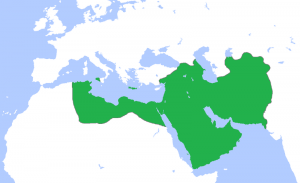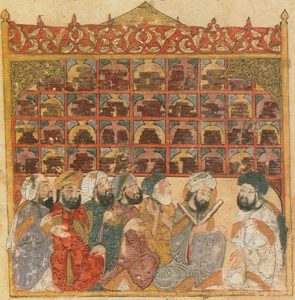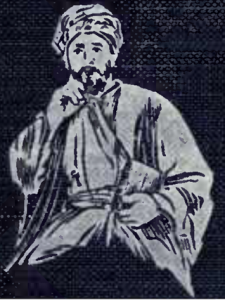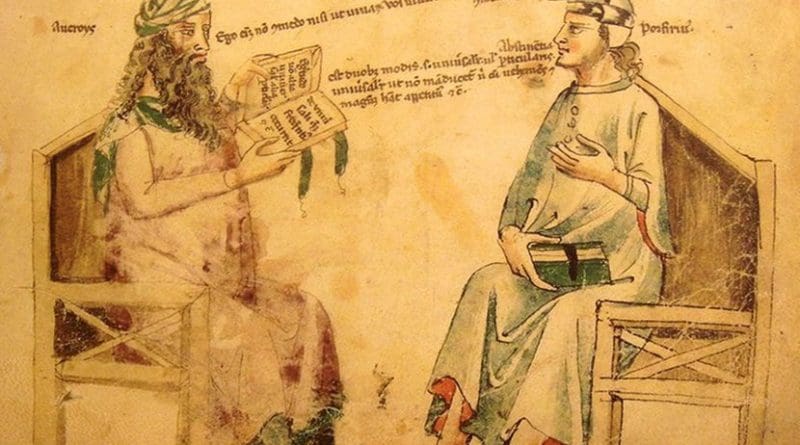The Lost Pride Of Islamic Golden Age – Analysis
The Prophet (Peace Be Upon Him) said: “Seek knowledge even as far as China”. In the context of ancient and medieval times it is interpreted as, Muslims should not hesitate to acquire wisdom and knowledge from all potential sources, even if it happens to be coming from non-Islamic lands. The Abbasids who established the Islamic Caliphate in Baghdad in 750 AD after toppling the Umayyad Dynasty were probably the first sincere adherents of this advice by the Prophet (PBUH) in the truest sense.
With a community of 1.6 billion people, Muslims have produced only 12 Nobel Laureates over the past century, of which only 2 have been recognized for contribution towards sciences. This number dwarfs in comparison to the world’s Jewish community, which has produced 197 Nobel Laureates from among a global diaspora of approximately 6 million Jews. According to statistical compilation in 2007 by Pew Research, Muslim nations spend only 0.2 percent of GDP on scientific research and development as against western nations which spend approximately 5 percent of GDP on such activities.
A UN report published in 2002 came to the conclusion that the entire Arab world translates approximately 330 books annually, which is no more than one-fifth the number being translated by Greece annually. It also states that in the past 1,000 years or so since the reign of Abbasid Caliph Al Ma’amun (813-833 AD) (who initiated a revolutionary “translation movement” in the medieval age), Arabs have translated as many books as Spain does in one year alone.

It does not require a genius to figure out that something is dismally wrong with the Muslim world as it lags so far behind everyone else when it comes to producing quality scientific and literary work. More so, since the above statistics are representative of the same civilization which, at one point, led the world in scientific research and discoveries during medieval period and was the torchbearer to European renaissance and enlightenment.
One can imagine, if great medieval Islamic scientists such as Ibn Sina, Al Razi, Al Farabi, Ibn Haytham and other were to be re-born today, they would be totally speechless and dumbfounded at the nadir this once great civilisation has hit.
Scholars and analysts have come up with many different reasons for this precipitous decline such as victory of Ashar’ism (led by the great Islamic scholar Imam Al Ghazali) which received state patronage during Seljuq period over Mu’tazilism, Sack of Baghdad by the Mongols in 1258, Spanish Reconquista in 1492 and others. There is no ambiguity that the above events have contributed significantly to the direction Islamic philosophy took in the post medieval age, especially considering the fact that the above events occurred in quick succession to each other and which never really gave enough opportunity for any sort of revival of Islamic intellectualism to take hold from there on. Before we go deeper into the reasons for this decline let us go back in time to get some sense of what the Islamic Golden Age was like between 8th to the 13th Century.
The Islamic Golden Age lasted from the 8th to 13th Century which was also the period when Abbasid Caliphate reigned the vast expanse of land from eastern Mediterranean to borders of India. Unlike their predecessors, the Umayyads, who were more tribal, conservative and ethnically oriented, the Abbasids were more cosmopolitan in their outlook towards managing the caliphate and were relatively open to receiving ideas from all quarters, Muslims and non-Muslims alike.
There were a lot of new converts to Islam from other pre-Islamic religions such as Soroastrianism, Buddhism, Nestorian Christians, and Manichaenism who occupied prominent offices in the Abbasid Caliphate and brought in novel ideas from their cultures and religions. One such family was of the Barmakids, who were Buddhists ancestrally from the Greco-Bactrian region near Balkh, but were rewarded with the highest offices in the Abbasid Caliphate of the “vizeirate”. The administration and financial coffers of the caliphate were under the complete control of Barmakids until they fell out of favor in 803 AD due to internal strife. The prominent Persian “Bukhtishu” family from Gundeshapur. who were Assyrian Nestorian Christians, acted as personal physicians to Abbasid Caliphs such as Harun-Al Rashid and Al Ma’amun, a job generally entrusted to the most faithful and trustworthy. They enjoyed complete support of the Abbasid and contributed tremendously to early Islamic medicine. The first true Islamic hospital (called “bimaristan”) was established in Baghdad under the reign of Caliph Harun Al Rashid and his chief physician Jabril Ibn Bukhtishu’s son was invited to head this hospital.
Similarly, other Nestorian Christians (such as Hunayn Ibn Ishaq) who were learned in Greek sciences were given vital intellectual positions and were involved in massive “translation movements” undertaken during the reign of Caliph Al Ma’amun which resulted in thousands of ancient Greek, Persian and Indian philosophical texts being translated into Arabic.
These works were carried out at the “Bayt Al Hikma” (known as House of Wisdom), which was a state of the art library and intellectual learning center established during the reign of Caliph Harun Al Rashid and expanded by his son Caliph Al Ma’amun. The Barmakids established the first paper mill in Baghdad in the8th Century.

Very few people are aware that the city of Baghdad derives its name from a sanskrit word- “bhaga-dad,” which means “gift of god” which was recommended by the barmakids who spearheaded the construction of the new city and caliphal palace. There were traces of Indian architecture in the new Abbasid palace, which hinted at the presence of Indian architects in designing the city and palace.
The above description gives us a flavor of how broad-minded and cosmopolitan the Abbasid approach was towards the treatment of its subjects where meritocracy was encouraged, patronized and rewarded.
One of the main reason for such great progress during Abbasid reign was that, it was for the first time ever that all prominent ancient centers of learning such as Egypt, Harran, Gundeshapur, Merv, Samarkand, Balkh, and portions of ancient India came under a single political entity that allowed for the first time ever in the history of the region, a thorough cross-pollination of ideas among intellectuals of various ancient centers of civilization that created new and unique knowledge in collaboration with each other.
This period produced some of the greatest Muslim minds who went on to bring revolutionary changes in the world. Although the empire of Islam arose from Arab lands, however, some of the finest intellectuals it produced were non-Arabs. Most of the great minds of Islam came from the belt of Greater Khorasan and Transoxiana in eastern Persia, an area which was a crucial point of intersection for various ancient civilizations such as Greek, Persian, Chinese and Indian and hence was historically very rich intellectually due to ancient practice of exchange of ideas.
Apart from this southern Mesopotamia and Egypt had also been ancient centers of learning since pre-Islamic days, hence it doesn’t come as a surprise that some great Islamic intellectual work came out of these lands as well apart from east. Some prominent works such as “The Canon Of Medicine” written by Ibn Sina (known in the west as Avicenna) and “Commentaries on Aristotle” written by Ibn Rushd (known in the west as Averroes) became staple texts of study during the European Renaissance and Enlightenment as part of university curriculum.
The helio-centric model (the sun is at the center of universe) developed by Nicolas Copernicus borrowed heavily from the works done by medieval Islamic scholars such as Nasir Al Din Al Tusi and Ibn Shatir. The geocentric model (the earth is at the center of universe) developed by Ibn Shatir employed mathematical techniques such as the “tusi couple” and “urdi lemma”, which was almost identical to the model later applied by Nicolas Copernicus in his heliocentric model reflecting the commonality between the two.
Other medieval Islamic astronomers such as Najm Al Din Al Qazwini Al Katibi and Qutb Al Din Shirazi had proposed a heliocentric model much before Copernicus did, but had later abandoned it.
![Hevelius's Selenographia, showing Alhasen [sic] representing reason, and Galileo representing the senses. Source: Wikipedia Commons.](http://www.eurasiareview.com/wp-content/uploads/2017/08/c-5-185x300.jpg)
Similarly there were many other medieval Islamic polymaths whose work laid the foundation for other modern European scholars to build upon in order to reach the advanced modern age we live in today.
So what went wrong that a once thriving civilization turns its back on progress and started moving in the direction of decay and oblivion?
One of the central arguments that has been given tremendous weight in scholarly debates for the decline of Islamic secular sciences is the tussle between two prominent Islamic theologies of Mu’tazilism and Ashar’ism, which went in favor of Ashar’ism, generally considered to be anti-philosophical and giving primacy to revelation over reason.
Let’s look at this in some detail.
Mu’tazili theology was promoted by Wasil Ibn Ata and Amr Ibn Ubayd (who belonged to the learning circle of Hasan Al Basri but later parted ways due to difference in opinion) towards the seventh century which prima facie gave precedence to reason over revelation. So if any text in the holy book was contrary to reason and logic then it needed to be avoided or re-interpreted in order to make it compatible with reason.
Moreover, mu’tazili theology propagated the idea of free-will while rejecting pre-destinarianism and believed in the createdness of Quran. This theology received strong support under Caliph Al Ma’amun and was used as a vehicle to synchronize religion with reason to undertake most of the philosophical inquiry and research during the golden age.
There was opposition from some quarters on this policy. Most famous being Ahmad Ibn Hanbal (after whom the hanbali school of jurisprudence is named) who rejected the Mu’tazila theology. He believed and preached a literalist interpretation of the Quran, which was strictly against any esoteric or inherent interpretations and was imprisoned by Al Ma’amun on account of his rebellious nature.
However, the major blow to Mu’tazila school came when Abu’l Hasan Al Ashari who was himself a Mu’tazili for 40 years, left the Mu’tazila’s on account of some major differences to establish his own theological school, which came to be known as Ashari’yya. This came to be a major turning point in Islamic history as Ashari theology believed in subordinating reason to revelation.
According to Ashari theology, human beings do not have absolute free will and the will that human beings have is acquired through God’s help. Broadly speaking, this theology was primarily against the Mu’tazila’s on the fact that reasoning and the quest to find answers over metaphysical matters was absurd (the philosophical side) which Mu’tazila’s were keen on exploring in accordance with the Greek thought. In general, the Asharis were not against reasoning in mathematical, geometric and logical matters.

One of the greatest Ashari scholar and theologian was Imam Al Ghazali whose work “Tahafut-Al-Falsafa” (The Incoherence of Philosophers) is widely considered to be a single most important work which struck a death knell for philosophical inquiry in the Muslim world and it has not been able to recover since then. Out of 20 points stated in his book he disagreed with the philosophers on three: They were:
a. the philosophers’ believed in the eternity of the world and refuted its createdness in time, whereas Al Ghazali said that the world was created ex-nihilo at a particular time as stated in Quran
b. Philosophers stated that God has knowledge only of universals and not particulars of his creation, whereas Al Ghazali said that God has knowledge of all particulars.
c. Philosophers commented that the bodily resurrection will not take place in the hereafter, where Al Ghazali disagreed with them on this and said bodily resurrection will occur on the day of judgement.
This refutation came at a time when Islamic philosophy was at its zenith. After this refutation by Al Ghazali, the temperament of scientific inquiry went on a downward spiral and Islam did not produce any great scientific works at least for another century until Ibn Rushd was born on the western end of Islamic empire in Spain who tried to revive philosophy in Islam. He wrote a refutation of Al Ghazali in his book “Tahafut-Al-Tahafut” (The Incoherence of Incoherence) in order to justify scientific inquiry, but it could not do much to revive Islamic intellectualism due to a combination of various factor.
Within 62 years from the time of Ibn Rushd’s death, the mongols raided and laid Siege to Baghdad in 1258. The famous library of Baghdad was destroyed and many great scholars were slaughtered after which intellectual Islam could not get back on its feet. Historical tales are told that the rivers of Tigris and Euphrates near Baghdad went absolutely black in color due to the ink of the books that drowned in them.
Finally, the reconquest of Spain by Christian armies from northern Europe captured the last major Islamic intellectual centers in Cordoba, Toledo and Granada. As a result of all these developments most philosophers turned towards mysticism and it can be said to some extent that the decline of philosophy in Islam led to the rise of Islamic mysticism.
Unfortunately most of the Islamic Universities in contemporary world are limited to teaching the Quran, Hadith, Jurisprudence and other Islamic sciences, however very limited to no cutting-edge research or work is being undertaken in the field of secular sciences in these universities. They work primarily as a propaganda tool sfor their state patrons and are most of the time involved in refuting religious policies and practices of other enemy states both Muslim and non-Muslim, which makes them extremely inward looking in approach.
On the other end, a major reason for the success of universities in the west has been their success in establishing a complete separation of religion and science as against Islamic universities, which have not been able to establish such a separation for various religious and political reasons.
Moreover, western universities are more autonomous in nature, which allows them to set and modify the curriculum in accordance with the developing intellectual environment and currents which is not possible in Islamic universities where curriculum is very limited in scope and any changes to the same is discouraged by patrons and authorities.
Unless Muslims and Islamic universities adapt to the 21st Century demands by embracing changes where required there cannot be any improvement in the condition of Muslims, let alone reviving the lost Islamic golden age. Historically, Muslims have proven once, that they have the necessary caliber to lead the world in the right direction and they have everything that it takes to revive the glorious Islamic past only if they overcome the myopic outlook consuming their minds for small political gains and take the initiative to pick up on the works and writings of their once glorious ancestors whose legacy unfortunately gathers dust in world libraries.
*Azfar Mohammad is an independent analyst,researcher & commentator on Middle Eastern affairs and Islamic History.Based in Dubai over past 12 years, he works in the private sector. During the course of his professional career he has travelled extensively across GCC region which has given him the opportunity to get a first hand experience of the economic, social and political landscape. He has extensively studied the region from the foreign policy perspective and is now working on doing a PhD in the subject.

